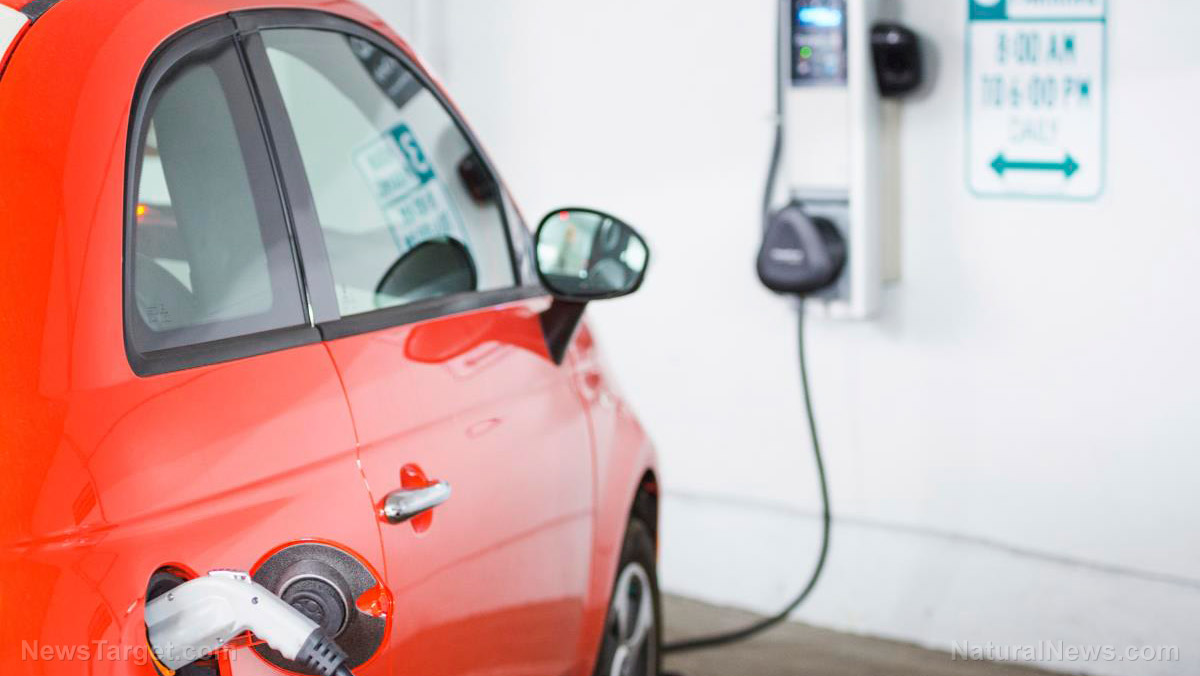Survival tips: Alternate power sources for your homestead
07/07/2023 / By Zoey Sky

If your prepping budget allows it, it’s ideal to incorporate alternative energy solutions into your emergency preparedness plan. This ensures that if the power grid goes down after disaster strikes, you’ll still have access to alternate energy sources in your homestead.
If you prefer renewable energy sources, consider investing in hydropower, solar or wind power systems. (h/t to TheOrganicPrepper.com)
Knowing about green, alternate energy sources can help you harness nature’s power effectively as you finalize your emergency preparedness plans.
Hydroelectric power
Hydroelectric power is a renewable energy source that harnesses the natural flow of moving water to generate electricity. A dam or reservoir is used to trap water and create a height difference between the water levels on both sides of the dam to produce hydropower. The water then flows through a small tunnel with turbines that generate electricity from an attached generator.
Hydropower is a cost-effective source of electricity that costs less than other power sources. It is a popular alternative energy source due to its nature as a renewable and reliable energy production method.
Additionally, hydropower is considered inexpensive in the long term and is associated with job creation and economic benefits.
Whatever the method, hydropower is easier to obtain and more widely used than most people realize. All states, except Delaware and Mississippi, use hydropower for electricity. In 2020, about 66 percent of electricity generated in Washington state came from hydropower.
However, environmental concerns are also linked to constructing hydroelectric plants, including the potential disruption of natural river flow and impacts on wildlife.
The reliance on river water for energy production can make hydroelectricity susceptible to droughts, which can limit its capacity to provide power for your homestead.
Despite these disadvantages, hydroelectricity is still a viable alternative energy option for homesteaders who want to prepare before SHTF.
Solar energy
Solar power is a renewable energy source that harnesses sunlight and converts it into electricity.
The technology behind solar power has advanced since its inception. Like hydropower, it is also one of the most popular and commonly used forms of renewable energy.
Solar energy can also help reduce dependence on fossil fuels, a finite resource that is becoming increasingly scarce.
Despite its popularity, the initial cost of installing a solar system can be costly. The storage of solar energy can also be expensive.
Solar energy is also weather-dependent. This means that if there are periods of low solar activity in your area, you will still need to use other power sources on your homestead. (Related: SHTF essentials: 7 Alternate power sources for emergencies.)
Wind energy
Wind power is a renewable form of energy that is harnessed via the use of wind turbines. The turbines convert the kinetic energy of moving air into electrical power.
Wind power can potentially generate electricity at a lower cost than traditional energy sources. It can also provide a reliable and consistent source of power in several locations.
But wind turbines can be expensive to install. They are also noisy and visually unappealing and can pose a threat to wildlife, like birds and bats.
Wind turbines may also require additional infrastructure to connect rural areas to urban centers.
Despite these challenges, wind power offers many benefits that make them an ideal choice for preppers.
Other alternative power sources
Here are two more alternative energy sources that you can consider for your homestead: biomass and geothermal energy.
Biomass energy is produced from non-fossilized plant materials such as wood, wood waste and biofuels. Biomass energy can be burned to release chemical energy and produce electricity.
Geothermal energy, meanwhile, derives heat from the planet’s hot interior or near the surface. Wells drilled into the earth allow a controlled release of steam or water to the surface to generate electricity. In turn, the planet’s constant temperature is utilized in geothermal heat pumps for heating and cooling buildings.
Biomass is a renewable energy source and it uses organic materials like wood and agricultural waste as fuel. This efficiency makes biomass energy a cost-effective energy solution.
Geothermal energy uses the earth’s natural heat as a power source. This makes it a reliable and constant energy source. Geothermal energy requires a specific geography to be viable. Drilling geothermal wells can also be expensive.
Considering energy sources is crucial for preppers and homesteaders because of the unpredictability of natural disasters and other survival scenarios.
When the power grid fails, you will lose access to many of your essential needs like communication, food and heating. But alternative energy sources provide a sustainable solution, and these sources can ensure that you have access to enough energy to be independent even after SHTF.
Before disaster strikes, look into alternative energy sources, along with their pros and cons, to ensure that you have access to a backup power source if the grid goes down.
For more information about your homestead needs, visit OffGrid.news.
Watch the video below to know more about USB solar panels.
This video is from the Cahlen channel on Brighteon.com.
More related stories:
Survival essentials: 5 Solar-powered items you need for your homestead.
Tips for setting up an off-grid power system when SHTF.
Scientists synthesize eco-friendly lubricant oils from sustainable, organic waste.
Sources include:
Submit a correction >>
Tagged Under:
alternative energy, Collapse, electricity, emergencies, energy sources, geothermal energy, green energy, green living, homesteading, hydropower, off grid, power, power grid, preparedness, prepper, prepping, prepping tips, SHTF, solar power, survival, survival gear, survivalist, wind power
This article may contain statements that reflect the opinion of the author
RECENT NEWS & ARTICLES
COPYRIGHT © 2017 DISASTER NEWS















